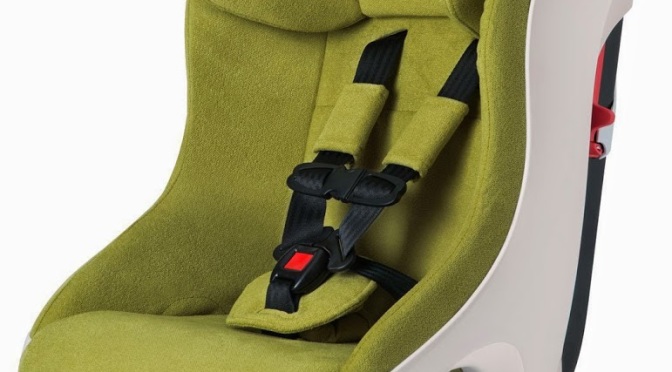If you’ve read this blog, you’ll know that I’m an advocate for extended rear-facing when it comes to keeping our children safe. Extended rear-facing is simply an easy-to-remember term for keeping children rear-facing in their car seats longer than the typical amount of time, which, according to current US law is 1 year. But 1 year just isn’t enough.
The AAP recommends 2 years, which is better, but we can still do so much better. Best practices dictates rear-facing as long as possible, and in the country where children rear-face until 4, Sweden, they lose almost no children to car collisions every year. If you’d like to learn more about Swedish driving practices, here is some additional reading on why Swedish roads are so safe.
Our population is several times larger than Sweden’s, which means that even if every child between 0 and 4 here were rear-facing, we’d still unfortunately have some fatalities. However, the truth is that the number of fatalities would be much, much lower than it currently is. This is precisely why I believe it’s worth spending a little extra to keep your children rear-facing a lot longer. The body is simply protected more efficiently through rear-facing compared to through forward-facing in a crash. Extended rear-facing works, and it’s worth doing with every child, every time. The seats below have the highest weight limits available today in the United States at 50 pounds.
50 Pounds
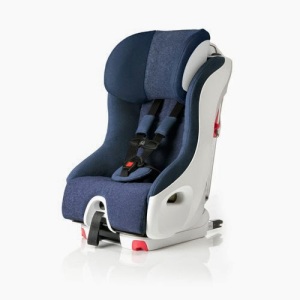 The Clek Foonf – Full review here, buy here. The Clek Foonf is the current flagship seat of Canadian car seat maker Clek. Rear-facing: 14-50 pounds, and 25-43″ in height. Your child should be able to sit upright without assistance, which typically isn’t reached by most infants until after 6 months, and his or her head should not reach past 1″ below the top of the headrest.
The Clek Foonf – Full review here, buy here. The Clek Foonf is the current flagship seat of Canadian car seat maker Clek. Rear-facing: 14-50 pounds, and 25-43″ in height. Your child should be able to sit upright without assistance, which typically isn’t reached by most infants until after 6 months, and his or her head should not reach past 1″ below the top of the headrest.
The Foonf is one of the best seats for making sure kids actually reach the useful limits of the seat, as it measures around 26.5″ in shell height when the headrest is extended to its fullest position. Most seats top out at 23″ or 24″ in shoulder height, which means a lot of children will outgrow them by weight before doing so by height. Clek took note of this and made sure to provide a usable height range throughout the weight range of the seat.
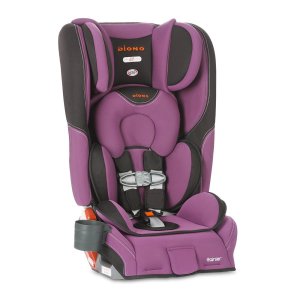 The Diono Rainier – Full review here, buy here. The Diono Rainier is US car seat maker Diono’s current flagship. It can be used rear-facing from 5-50 pounds, and up to 44″ in height. Your child’s head should not reach past 1.5″ below the top of the headrest.
The Diono Rainier – Full review here, buy here. The Diono Rainier is US car seat maker Diono’s current flagship. It can be used rear-facing from 5-50 pounds, and up to 44″ in height. Your child’s head should not reach past 1.5″ below the top of the headrest.
I measure the shell height at 25″ again, which is consistent with previous Dionos and which makes sense since the general height limit by Diono remains unchanged from that of previous models. This is slightly shorter than the highest headrest position achievable in the Clek Foonf, but is still excellent and is likely to enable children to rear-face for several years, and for several to reach the weight limit for the seat.
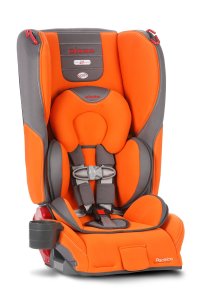 The Diono Pacifica – Full review here, buy here. The Diono Pacifica is essentially the same seat as the Diono Rainier, with the exception of the headwings that are present in the Rainier. It can be used rear-facing between 5-50 pounds, and up to 44″ in height. Your child’s head should not reach past 1.5″ below the top of the headrest.
The Diono Pacifica – Full review here, buy here. The Diono Pacifica is essentially the same seat as the Diono Rainier, with the exception of the headwings that are present in the Rainier. It can be used rear-facing between 5-50 pounds, and up to 44″ in height. Your child’s head should not reach past 1.5″ below the top of the headrest.
I measure the shell height at 25″ again, which is consistent with previous Dionos and which makes sense since the general height limit by Diono remains unchanged from that of previous models. This is slightly shorter than the highest headrest position achievable in the Clek Foonf, but is still excellent and is likely to enable children to rear-face for several years, and for several to reach the weight limit for the seat.
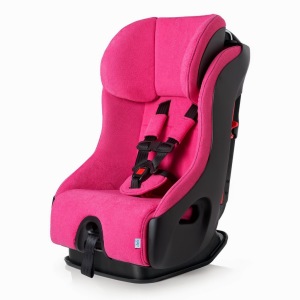 The Clek Fllo – Full review here, buy here. The Clek Fllo is the newest member on the list of honor in extended rear-facing as only the 4th seat on the market to allow 50 pounds of rear-facing. Its weight limits span 14 to 50 pounds, just as those in the Foonf, while its height limits span 25 to 43 inches, just as those in the Foonf.
The Clek Fllo – Full review here, buy here. The Clek Fllo is the newest member on the list of honor in extended rear-facing as only the 4th seat on the market to allow 50 pounds of rear-facing. Its weight limits span 14 to 50 pounds, just as those in the Foonf, while its height limits span 25 to 43 inches, just as those in the Foonf.
The Fllo, however, weighs significantly less than the Foonf, at 25 pounds compared to 38 pounds. The seat width remains almost exactly the same at 16.9 inches in the Fllo vs 17 inches in the Foonf. The front-to-back length is 29 inches without the anti-rebound bar and 32.5 in with; both are smaller than the fixed 33 inches in the Foonf. The seat height at 23.5 inches is several inches shorter than the 25.75 inches in the Foonf.
Keep in mind that each of these seats also offers a forward-facing option, but the key point is that none of these forward-facing options should be used until they absolutely have to. Each change in a seating position, whether from rear-facing to forward-facing, or from forward-facing to boostering, or from boostering to the use of a seat belt, represents a reduction in safety. The longer a child stays in an earlier phase of seat, as long as it still fits and is installed correctly, the safer the child is, whether that child is a newborn or a 10-year-old.
I look forward to updating this list in the coming years as more manufacturers of car seats in the United States realize that there is a growing, ready, and willing market of parents and child safety advocates who are eager to protect their children by keeping them rear-facing long beyond the official recommendations or barebones laws currently in the United States. There are seats that rear-face past 50 pounds available in Sweden, of course, but those are not legally available in the United States, which is why we need to continue to spread the word that rear-facing is the way to go.
At the same time, don’t forget that there are also seats available that allow for extended rear-facing even when they don’t have the highest weight limits. The Graco Size4Me is a great example of a seat with a 40 pound weight limit but height limits that exceed those of the seats with higher weight limits. It’s also significantly cheaper, which makes it more affordable for families with smaller budgets. In fact, there are great options for extended rear-facing and harnessing at virtually every budget. What matters is that you use whatever seat you have as long as you can, and don’t shift to a less protective configuration until you have to.
Remember, when you know better, you do better. Please rear-face to the limits, and encourage everyone you know to do so as well.
—
If you find the information on car safety, recommended car seats, and car seat reviews on this car seat blog helpful, you can shop through this Amazon link for any purchases, car seat-related or not. Canadians can shop through this link for Canadian purchases.

